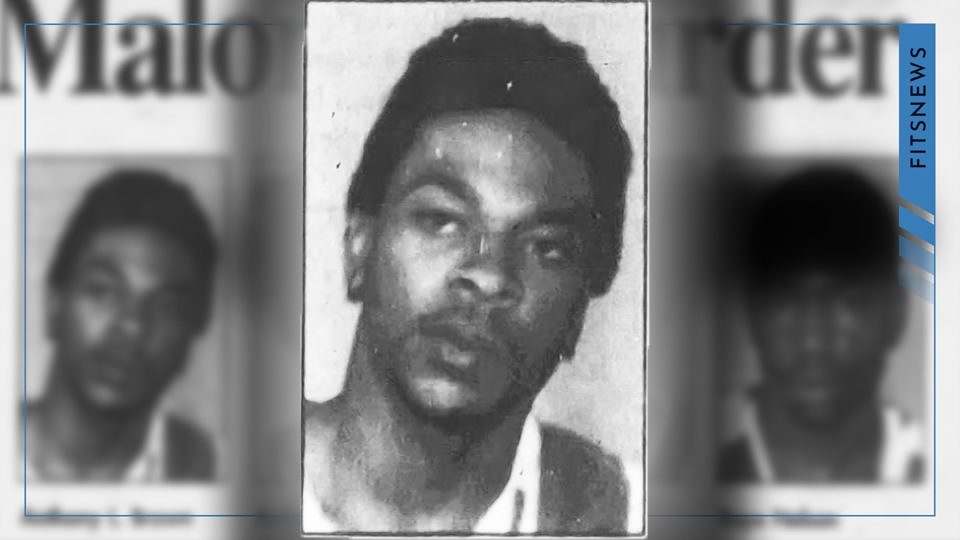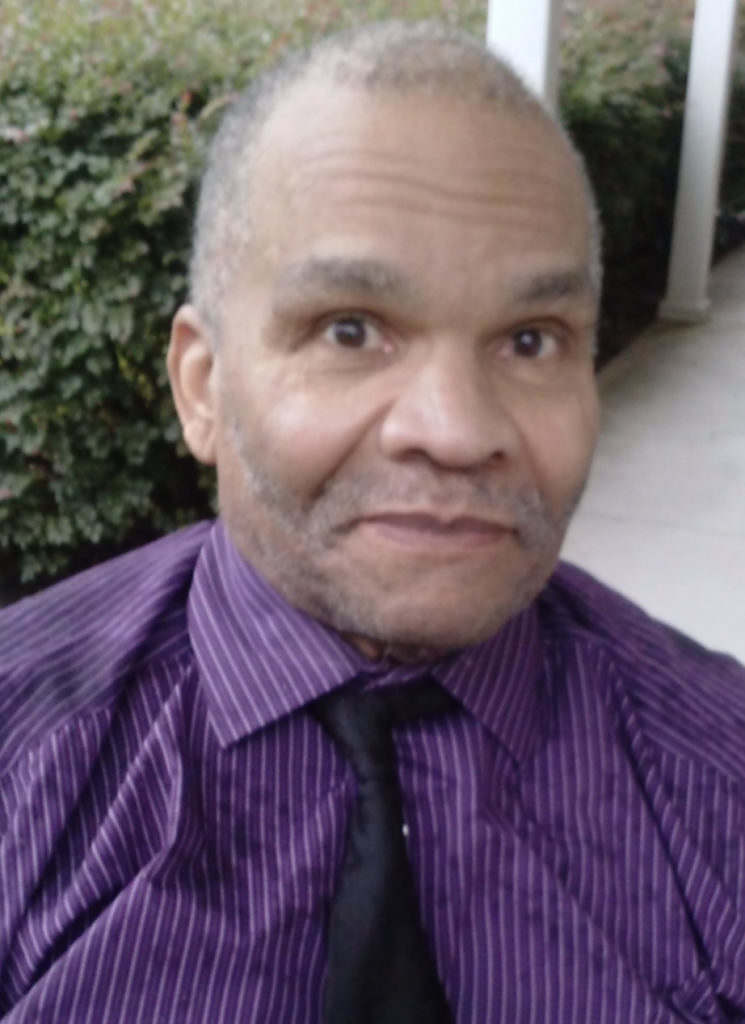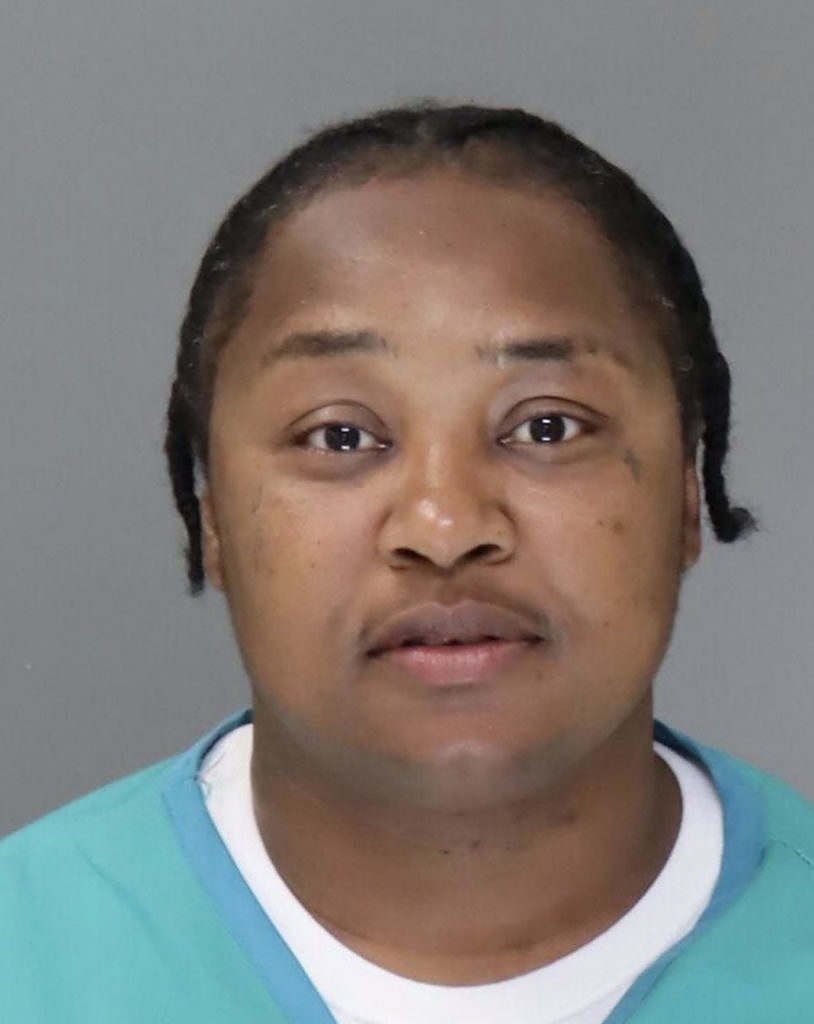|
Getting your Trinity Audio player ready...
|
EDITOR’S NOTE: This is the second part of an exclusive FITSNews series about the 2004 murder of Carolyn Maloney of Walterboro, South Carolina – and the man currently serving a forty-year sentence for killing her. Anthony L. Brown recently asked the Innocence Project to take up his case and help him pursue exoneration. As part of that process, he provided his application to FITSNews for review.
Colleton County sheriff’s deputies were having lunch at a Cracker Barrel restaurant on a rainy Tuesday afternoon in April 2004 when they were called to respond to Maloney Concrete on Acorn Road in Walterboro, South Carolina.
On that dead end road – inside the business’s office – they found Carolyn Maloney, the company’s co-owner. She had been shot once in the right side of her head – just above the ear – while holding two of her grandbabies. The children – a three-month-old boy and a 20-month old girl – were covered in blood, but physically unharmed.
A single “spent round bullet casing” was located “on the floor a few feet from the chair where the victim was sitting.”
Maloney was pronounced dead at the scene by the responding paramedic.
According to Hampton Jenkins, a detective with the Colleton County Sheriff’s Office (CCSO) at the time, there was sand everywhere due to the nature of the concrete business. As a result, the footprints of those responsible for ending Maloney‘s life were clearly visible to the members of law-enforcement who were arriving on the scene.
“It was a very, very graphic crime scene because it was an up close gunshot wound to the head,” Jenkins said. “And so it was pretty gruesome for the children because they were sitting in her lap when it happened.”

***
Some of the footprints visible in the sand were unusually small for an adult. As soon as they were spotted, one of the narcotics detectives immediately associated them with the name of a “frequent flier” in the area – someone well-known to police as having a drug problem.
Her name? April Hampton.
“He took one look at the footprint and said, ‘that’s April Hampton’,” detective Jenkins recalled.
The search for suspects began with that trail of footprints – and ultimately led authorities to three people who were all familiar to law enforcement. Two of those individuals are currently serving time for this crime – including Anthony L. Brown.
But before those threads were pulled, investigators started their inquiries closer to home …
***
WILLIAM H. MALONEY
Not surprisingly, this criminal inquiry began as most murder investigations do – with law enforcement questioning the victim’s family members. Initial interviews were conducted with Carol Maple – the daughter of Carolyn Maloney and the person who discovered her body and called 9-1-1. Detectives also questioned William H. Maloney, Carolyn Maloney’s husband.
According to the incident report (.pdf), upon leaving the crime scene detectives visited the Maloney residence on School House Road in Ruffin, S.C. with Mr. Maloney in tow.
While there, Maloney made some strange remarks that made their way into the police narrative.
As friends and family members began arriving at the family home, William Maloney said he did not want to talk to them – and so detectives asked them to leave. As this was happening, Maloney allegedly remarked, “I know how to get rid of them – I will tell them I did it and if they don’t leave I will do the same to them.” He later commented on a case involving a woman who was convicted of killing her husband – saying she would probably get off on appeal.
In addition to these odd remarks, investigators had reason to suspect Maloney because of his “checkered reputation.” At the same time, though, they knew if he was involved in the murder of Carolyn Maloney he did not act alone – as evidenced by the footprints.
While Mrs. Maloney was a beloved and respected member of the community, her husband had a different reputation. In 1997, he was indicted on five felony counts of possessing, concealing, selling or disposing of a stolen vehicle valued at more than $5,000 and one count of grand larceny for failing to return rented equipment valued at more than $5,000. The allegations hinted at his possible association with a “chop shop” – or an illegal body shop that disassembles stolen vehicles for the purpose of selling their parts.
Maloney pleaded guilty to all six charges in October 1997 and received a suspended sentence and five years of probation. On September 2, 1998, after less than a year, his probation was terminated (.pdf).
Members of law enforcement also knew Maloney to smoke crack cocaine, according to Jenkins. However, this alleged habit was not documented in the investigative reports – or any of the court records about this case obtained by our media outlet. Jenkins further revealed Maloney was drinking heavily when he was interviewed in the aftermath of Carolyn’s murder. This made it difficult for investigators to obtain the information they needed, he said.
A test performed the day of the murder indicated the presence of gunshot residue on the palms of both of Maloney’s hands. As a convicted felon, he was prohibited from owning or using a firearm at the time.
A polygraph administered to Maloney was inconclusive. However, his convincing confession to other crimes prompted detectives to search elsewhere for the shooter. According to Jenkins, Maloney confessed to using crack cocaine – and paying April Hampton to have sex with him.
What does William Maloney have to say about the case today? Nothing … he died on April 9, 2019, fifteen years after his wife’s brutal slaying.
***
APRIL HAMPTON
“April liked to smoke crack as well,” detective Jenkins said. “She was four-foot-ten and she was bad enough that she would go do home invasions on drug dealers by herself. She didn’t mind kicking the door down and storming the house.”
On April 22, 2004, Detectives picked up Hampton for questioning. While she appeared to be cooperating, every retelling of the fateful events of that day proved different from the last. The first thing she lied about was her shoes. She initially claimed the shoes seized from her home – which matched the impressions found at the crime scene – belonged to her sister.
“Over the course of two or three days, I think she gave me six different written statements and every time we got a bit more information.” Jenkins said. “She finally placed herself there.”
April Hampton became the source of the information that ultimately led to the indictment of three others for armed robbery and murder. She named Raye Nelson, Anthony T. Brown, and Anthony L. Brown – the latter of whom she referred to as “Banks.”
According to Hampton, “Banks” was the one who shot and killed Carolyn Maloney.
Hampton is currently incarcerated at Goodman correctional facility, part of the S.C. Department of Corrections (SCDC) network of prisons. She was sentenced to 25 years behind bars for her part in the Maloney murder and is scheduled to be released on August 14, 2027 (pdf).
FITSNews attempted to contact Hampton through the prison messaging system. Receiving no response, we attempted to follow up and discovered she had blocked us from further communication.
***
ANTHONY L. BROWN
From their very first interview with him, investigators were convinced Anthony L. Brown was involved in Carolyn Maloney’s murder.
“He was known around town as trouble,” Jenkins said. “I don’t remember exactly why but I do remember him having a pretty bad reputation.”
While the other three co-defendants confessed to participating in the crime, Anthony L. Brown did not.
“He was a stone cold killer,” Jenkins said. ‘There’s no doubt in my mind about that.”
According to the investigative file, several items – including Anthony L. Brown’s shoes – were seized from his grandmother’s home, but this evidence didn’t conclusively link him to the crime scene. Also, the murder weapon was never recovered.
Following jury selection, Anthony L. Brown’s defense attorney – Kenneth Tootle – advised him to plead guilty and accept the forty-year sentence. Following his sentencing, Anthony L. Brown pursued post-conviction relief – arguing ineffective assistance of counsel.
When the matter came up for a hearing on September 3, 2010, former S.C. circuit court judge Perry Buckner asked Tootle about the case and the reason for his advice.
“Is there any evidence, other than the testimony of the three other co-defendants, Mr. Nelson, Mr. Anthony Terez Brown and April Hampton; was there any evidence, eyewitness testimony, forensic evidence, fingerprints, physical objects, anything, other than the testimony of these three people that he was even around that day?” Buckner asked.
Tootle responded there was not – and that he believed the evidence in the case would not have been sufficient to convict Anthony L. Brown. However, he didn’t think a jury would see it that way.
“It doesn’t matter who would’ve been accused when they see this poor woman with blood running down her and blood on the little baby children,” Tootle said. “She had two little children there. The crime scene itself was a horrendous picture. So the evidence would have substantiated that this woman was murdered … the pictures, the other evidence that could have been presented was very prejudicial. It was very emotionally impacting. And then, if Mr. Brown was tied to that through the testimony of the other three co-defendants, I’m afraid that there would have been no way for us to prevail.”
Buckner denied the request for post-conviction relief.
***
THE WITNESS
On the day of the murder, William Maloney asked investigators how the case could be solved without a witness. According to the investigative file, a witness emerged in November 2004 – seven months after the murder – and after the four suspects had been indicted on charges of armed robbery and murder.
This information was provided by Carol Maple. She said her child, who was 20 months old at the time of her grandmother’s murder, had identified the shooter. According to Maple, the little girl told her Anthony T. Brown – not Anthony L. Brown – was “the man who hurt her grandmother”.
This exculpatory evidence was not provided to the defense during pre-trial discovery. Anthony L. Brown learned of it as a result of our investigation – and the information we obtained through FOIA requests. Chronologically, it is the last entry made in the file – and no subsequent action is noted.
***
AFTERWORD
Following the murder of Carolyn Maloney, William Maloney found himself in a new role as the husband of the victim. He began to write letters to the editor and political columns about crime. In these letters, he encouraged voters to replace former sheriff Allan Beach.
Beach lost his bid for re-election and voters replaced him with a new sheriff, George Malone. When his term began on January 4, 2005, Malone decided not to renew the contracts of fifteen people who worked for the office – including Hampton Jenkins.
***
ABOUT THIS SERIES
As noted in our original installment, when reporting on criminal activity of any kind FITSNews always includes a reminder that the accused are considered innocent until proven guilty in a court of law – or until they plead guilty. Once that happens, we presume the verdicts are just and true – and proven in front of impartial, fair juries “beyond a reasonable doubt.” We also presume the plea deals are valid. Even after a matter has been adjudicated, though, FITSNews is always willing to pursue claims of innocence. The objective is to fully investigate the claims – and follow the truth wherever it may lead.
No media outlet in South Carolina has expended as much bandwidth as FITSNews when it comes to holding violent criminals accountable for their actions – and no media outlet has done as much as ours in standing up for victims of violent crime. But consistent with our open microphone policy, we are always willing to let those accused of such horrific crimes make their case to our audience.
***
ABOUT THE AUTHOR…
Callie Lyons is a relentless investigative journalist, researcher, and author known for exposing hard truths with heart and precision. As a journalist for FITSNews, she dives into high-profile and murky cases—like that of Mica Francis Miller— with fearless resolve and a sharp eye for detail, whether it’s tracking white-collar crime, uncovering religious abuse, or examining the often-bizarre behavior of those who believe they’re above the law.
Callie made waves with her groundbreaking 2007 book Stain-Resistant, Nonstick, Waterproof and Lethal, the first to reveal the dangers of forever chemicals, a story that helped inspire the film Dark Waters and influenced global scientific dialogue. Her work has appeared in numerous documentaries, including Toxic Soup, National Geographic’s Parched: Toxic Waters, and more recently Citizen Sleuth, which examines the complexities of true crime podcasting.
Whether she’s navigating environmental disasters or the darker corners of society, Lyons operates with one guiding belief: “Truth never damages a cause that is just.”
***
WANNA SOUND OFF?
Got something you’d like to say in response to one of our articles? Or an issue you’d like to address proactively? We have an open microphone policy! Submit your letter to the editor (or guest column) via email HERE. Got a tip for a story? CLICK HERE. Got a technical question or a glitch to report? CLICK HERE.





